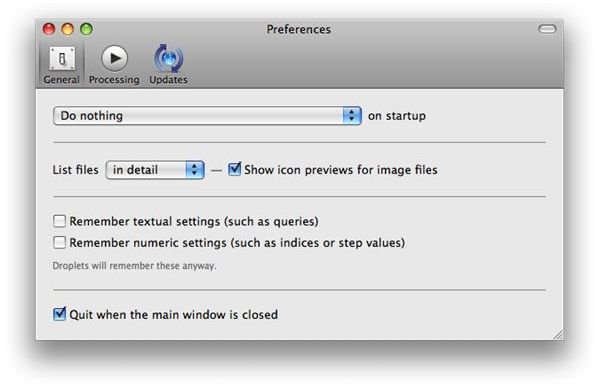

The first step was to create an Automator workflow to duplicate all my images at once, reisizing them to 650 pixels, and appending “_small” to their filename. I decided to fix this before the Apple earnings call because I knew Excel was going to export our charts as large PNGs – but, mostly, because it really didn’t make sense to keep on manually clicking menus and selecting sizes after all these years of writing for MacStories.
NAME MANGLER ADVANCED EXAMPLES MANUAL
Until last month, the process of duplicating the larger image and saving it to a smaller size was entirely manual – something that, I later realized, was surprising considering I try to automate as many aspects of my daily workflow as possible. In either case, images are uploaded to our CDN with Cyberduck, which I have been using for years and that has never failed me.
NAME MANGLER ADVANCED EXAMPLES FULL
When I create images for MacStories, I either keep them at a single size between 600 and 650 pixels, or use two separate versions: the original larger size, and a smaller one that links to the full version. It's not 100% comprehensive or systematic (sorry!) but these were the ones I found in a good sized sample of my world music.A few weeks ago, while I was preparing my coverage of Apple’s Q2 2013 earnings call, I grew tired of my system to resize and rename images on OS X, so I rebuilt it from scratch using Automator, Name Mangler 3, and TextExpander. I built this expression and used it for Artist and Album too. And I got everything on the Sony Walkman. I listen to a lot of world music so there were several thousand replacements made relatively painlessly! And it maintained all the changes in my 200+playlists. Even when I had replaced all the special characters in the "container" fields and used them to renamed the files, it also didn't like any non-ASCII characters in the Name - Artist field either, so I went ahead and replaced all those too, copying them back across from the "container" fields. I did a lot of tests of different playlist formats/path creation rules and it just didn't like any of them. full path without drive letter) is only available for m3u. I've just implemented this on my library of around 36,000 mp3s because my Sony NW-A35 either doesn't recognize m3u8 playlist format, that I gather from elsewhere in the forum is needed to deal with non-ASCII characters, or it can't find the playlists as the option that works for generating the right file paths for the playlists (. The nice thing is, once you've built the replace() expression for one category (like Name for example), you can reuse it for the others. If it uses a dozen or more, it's going to require a lot of careful evaluation and testing. If your song collection only references 4, 5, 6 characters with accents, this might not be too bad. My example above only replaces 4 sets of characters. The real work here is building up the replace() expressions. For example, you might make the directory rule:

So now you can use Rename, Move, and Copy to rename the files based on these new fields. Now all of your new non-accented fields are populated. Make sure your replace() expression references the correct field: to populate Artist_ascii and to populate Album_ascii. Repeat the above with Artist and Album if you want, pasting into the Artist_ascii and Album_ascii fields. Paste in the replace expression with an = sign in front like this:Ĭode: =replace(replace(replace(replace(,à, a),á, a), é, e), ó, o) Let's say you are working on Name, so we are going to find the Name_ascii field. Press Alt- to bring up the tagging pane on the left.ģ. This could be just a few files, or hundreds or thousands. Highlight a group of files you want to work on. To add these fields, go to: Tools > Options > Library & Folders > Manage Library Fields > Add New Fieldġ. You just want a container to hold the new strings that don't have accents. This is necessary because you don't want to overwrite the data in your Name, Album, or Artist fields. Next step:īuild a new Library field for each field you want to use in your file name.

This works on the name field, but could be applied to Artist or Album or whatever.


 0 kommentar(er)
0 kommentar(er)
